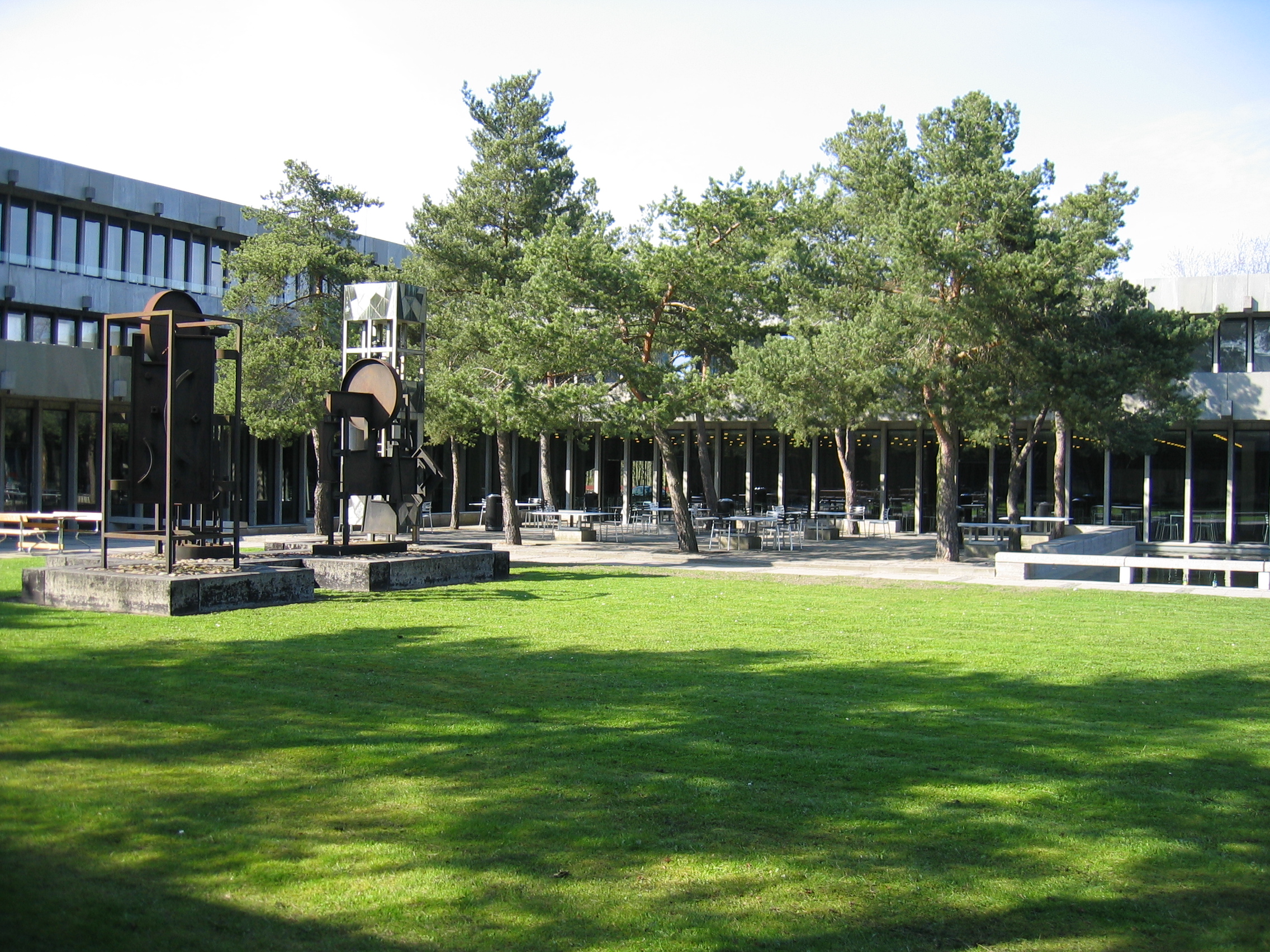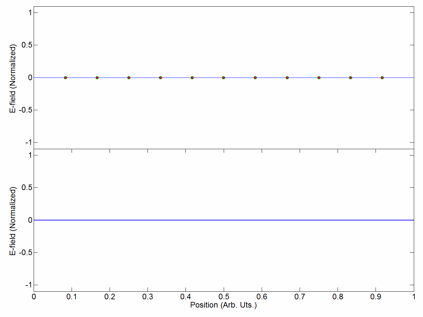|
Bjarne Tromborg
Bjarne Tromborg (born 1940) is a Danish physicist, best known for his work in particle physics and photonics.Henrik Skov, "Kernefysikeren der blev opslugt af optik", ''Ingeniøren'', Nov 27, 2005, http://ing.dk/artikel/67283-kernefysikeren-der-blev-opslugt-af-optik Biography Tromborg was born in Give, Denmark. In 1968, he received the M.Sc. degree in physics and mathematics from the Niels Bohr Institute, in Copenhagen, Denmark. He was a university researcher studying high-energy particle physics from 1968 to 1978. In 1979, he joined the research laboratory of the Danish Teleadministrations in Copenhagen. He was Head of Optical Communications Department at Tele Danmark Research, Horsholm, Denmark from 1987 to 1995. He was an adjunct professor at the Niels Bohr Institute from 1991 to 2001. In 1997, he took a leave of absence at the Technion - Israel Institute of Technology. Until his retirement at the end June 2006, he was a research professor at Dept. of Communications, Opt ... [...More Info...] [...Related Items...] OR: [Wikipedia] [Google] [Baidu] |
Denmark
) , song = ( en, "King Christian stood by the lofty mast") , song_type = National and royal anthem , image_map = EU-Denmark.svg , map_caption = , subdivision_type = Sovereign state , subdivision_name = Kingdom of Denmark , established_title = Consolidation , established_date = 8th century , established_title2 = Christianization , established_date2 = 965 , established_title3 = , established_date3 = 5 June 1849 , established_title4 = Faroese home rule , established_date4 = 24 March 1948 , established_title5 = EEC accession , established_date5 = 1 January 1973 , established_title6 = Greenlandic home rule , established_date6 = 1 May 1979 , official_languages = Danish , languages_type = Regional languages , languages_sub = yes , languages = GermanGerman is recognised as a protected minority language in the South Jutland area of Denmark. , demonym = , capital = Copenhagen , largest_city = capital , coordinates = , ethnic_groups = , ethnic_gro ... [...More Info...] [...Related Items...] OR: [Wikipedia] [Google] [Baidu] |
S-matrix Theory
''S''-matrix theory was a proposal for replacing local quantum field theory as the basic principle of elementary particle physics. It avoided the notion of space and time by replacing it with abstract mathematical properties of the ''S''-matrix. In ''S''-matrix theory, the ''S''-matrix relates the infinite past to the infinite future in one step, without being decomposable into intermediate steps corresponding to time-slices. This program was very influential in the 1960s, because it was a plausible substitute for quantum field theory, which was plagued with the zero interaction phenomenon at strong coupling. Applied to the strong interaction, it led to the development of string theory. ''S''-matrix theory was largely abandoned by physicists in the 1970s, as quantum chromodynamics was recognized to solve the problems of strong interactions within the framework of field theory. But in the guise of string theory, ''S''-matrix theory is still a popular approach to the problem of ... [...More Info...] [...Related Items...] OR: [Wikipedia] [Google] [Baidu] |
Stochastic Process
In probability theory and related fields, a stochastic () or random process is a mathematical object usually defined as a family of random variables. Stochastic processes are widely used as mathematical models of systems and phenomena that appear to vary in a random manner. Examples include the growth of a bacterial population, an electrical current fluctuating due to thermal noise, or the movement of a gas molecule. Stochastic processes have applications in many disciplines such as biology, chemistry, ecology, neuroscience, physics, image processing, signal processing, control theory, information theory, computer science, cryptography and telecommunications. Furthermore, seemingly random changes in financial markets have motivated the extensive use of stochastic processes in finance. Applications and the study of phenomena have in turn inspired the proposal of new stochastic processes. Examples of such stochastic processes include the Wiener process or Brownian motion ... [...More Info...] [...Related Items...] OR: [Wikipedia] [Google] [Baidu] |
Photonic Crystal
A photonic crystal is an optical nanostructure in which the refractive index changes periodically. This affects the propagation of light in the same way that the structure of natural crystals gives rise to X-ray diffraction and that the atomic lattices (crystal structure) of semiconductors affect their conductivity of electrons. Photonic crystals occur in nature in the form of structural coloration and animal reflectors, and, as artificially produced, promise to be useful in a range of applications. Photonic crystals can be fabricated for one, two, or three dimensions. One-dimensional photonic crystals can be made of thin film layers deposited on each other. Two-dimensional ones can be made by photolithography, or by drilling holes in a suitable substrate. Fabrication methods for three-dimensional ones include drilling under different angles, stacking multiple 2-D layers on top of each other, direct laser writing, or, for example, instigating self-assembly of spheres in ... [...More Info...] [...Related Items...] OR: [Wikipedia] [Google] [Baidu] |
European Union
The European Union (EU) is a supranational political and economic union of member states that are located primarily in Europe. The union has a total area of and an estimated total population of about 447million. The EU has often been described as a ''sui generis'' political entity (without precedent or comparison) combining the characteristics of both a federation and a confederation. Containing 5.8per cent of the world population in 2020, the EU generated a nominal gross domestic product (GDP) of around trillion in 2021, constituting approximately 18per cent of global nominal GDP. Additionally, all EU states but Bulgaria have a very high Human Development Index according to the United Nations Development Programme. Its cornerstone, the Customs Union, paved the way to establishing an internal single market based on standardised legal framework and legislation that applies in all member states in those matters, and only those matters, where the states have agree ... [...More Info...] [...Related Items...] OR: [Wikipedia] [Google] [Baidu] |
COM*DTU
The Technical University of Denmark ( da, Danmarks Tekniske Universitet), often simply referred to as DTU, is a polytechnic university and school of engineering. It was founded in 1829 at the initiative of Hans Christian Ørsted as Denmark's first polytechnic, and it is today ranked among Europe's leading engineering institutions. It is located in the town Kongens Lyngby, north of central Copenhagen, Denmark. Along with École Polytechnique in Paris, École Polytechnique Fédérale de Lausanne, Eindhoven University of Technology, Technical University of Munich and Technion – Israel Institute of Technology, DTU is a member of EuroTech Universities Alliance. History DTU was founded in 1829 as the "College of Advanced Technology" (Danish: Den Polytekniske Læreanstalt). The Physicist Hans Christian Ørsted, at that time a professor at the University of Copenhagen, was one of the driving forces behind this initiative. He was inspired by the École Polytechnique in Paris, Franc ... [...More Info...] [...Related Items...] OR: [Wikipedia] [Google] [Baidu] |
Ultrafast
In optics, an ultrashort pulse, also known as an ultrafast event, is an electromagnetic pulse whose time duration is of the order of a picosecond (10−12 second) or less. Such pulses have a broadband optical spectrum, and can be created by mode-locked oscillators. Amplification of ultrashort pulses almost always requires the technique of chirped pulse amplification, in order to avoid damage to the gain medium of the amplifier. They are characterized by a high peak intensity (or more correctly, irradiance) that usually leads to nonlinear interactions in various materials, including air. These processes are studied in the field of nonlinear optics. In the specialized literature, "ultrashort" refers to the femtosecond (fs) and picosecond (ps) range, although such pulses no longer hold the record for the shortest pulses artificially generated. Indeed, x-ray pulses with durations on the attosecond time scale have been reported. The 1999 Nobel Prize in Chemistry was awarded to Ah ... [...More Info...] [...Related Items...] OR: [Wikipedia] [Google] [Baidu] |
Femtosecond Laser
Mode locking is a technique in optics by which a laser can be made to produce pulses of light of extremely short duration, on the order of picoseconds (10−12 s) or femtoseconds (10−15 s). A laser operated in this way is sometimes referred to as a femtosecond laser, for example, in modern refractive surgery. The basis of the technique is to induce a fixed phase relationship between the longitudinal modes of the laser's resonant cavity. Constructive interference between these modes can cause the laser light to be produced as a train of pulses. The laser is then said to be "phase-locked" or "mode-locked". Laser cavity modes Although laser light is perhaps the purest form of light, it is not of a single, pure frequency or wavelength. All lasers produce light over some natural bandwidth or range of frequencies. A laser's bandwidth of operation is determined primarily by the gain medium from which the laser is constructed, and the range of frequencies over which a ... [...More Info...] [...Related Items...] OR: [Wikipedia] [Google] [Baidu] |
Semiconductor Materials
A semiconductor is a material which has an electrical conductivity value falling between that of a conductor, such as copper, and an insulator, such as glass. Its resistivity falls as its temperature rises; metals behave in the opposite way. Its conducting properties may be altered in useful ways by introducing impurities ("doping") into the crystal structure. When two differently doped regions exist in the same crystal, a semiconductor junction is created. The behavior of charge carriers, which include electrons, ions, and electron holes, at these junctions is the basis of diodes, transistors, and most modern electronics. Some examples of semiconductors are silicon, germanium, gallium arsenide, and elements near the so-called "metalloid staircase" on the periodic table. After silicon, gallium arsenide is the second-most common semiconductor and is used in laser diodes, solar cells, microwave-frequency integrated circuits, and others. Silicon is a critical element for fabri ... [...More Info...] [...Related Items...] OR: [Wikipedia] [Google] [Baidu] |
Björn Jónsson
Björn Jónsson (8 October 1846 – 24 November 1912) was minister for Iceland from 31 March 1909 to 14 March 1911. He was the father of Sveinn Björnsson, the only regent of Iceland and first president of Iceland. Björn became Minister for Iceland after Hannes Hafstein and his supporters suffered losses in the elections of 1908, where the voters rejected the draft of a new constitution. Björn was forced to resign after forcing the General Director of the National Bank, Tryggvi Gunnarsson, out of that post due to heavy criticism of their supporters. Björn and other opponents of the Draft won a landslide victory in the 1908 elections. He served as speaker of the Althing in 1909. Björn was commonly known for Ísafold, the paper he published and edited from 1874 to 1909, and was known as Björn í Ísafold or Ísafoldar-Björn. Björn offended the Danish Authorities in 1909 by appointing a Councillor of Commerce to work on business negotiations for Iceland, when he appo ... [...More Info...] [...Related Items...] OR: [Wikipedia] [Google] [Baidu] |
Distributed Feedback Laser
A distributed-feedback laser (DFB) is a type of laser diode, quantum-cascade laser or optical-fiber laser where the active region of the device contains a periodically structured element or diffraction grating. The structure builds a one-dimensional interference grating ( Bragg scattering), and the grating provides optical feedback for the laser. This longitudinal diffraction grating has periodic changes in refractive index that cause reflection back into the cavity. The periodic change can be either in the real part of the refractive index or in the imaginary part (gain or absorption). The strongest grating operates in the first order, where the periodicity is one-half wave, and the light is reflected backwards. DFB lasers tend to be much more stable than Fabry–Perot or DBR lasers and are used frequently when clean single-mode operation is needed, especially in high-speed fiber-optic telecommunications. Semiconductor DFB lasers in the lowest loss window of optical fibers at a ... [...More Info...] [...Related Items...] OR: [Wikipedia] [Google] [Baidu] |
Optical Cavity
An optical cavity, resonating cavity or optical resonator is an arrangement of mirrors or other optical elements that forms a cavity resonator for light waves. Optical cavities are a major component of lasers, surrounding the gain medium and providing feedback of the laser light. They are also used in optical parametric oscillators and some interferometers. Light confined in the cavity reflects multiple times, producing modes with certain resonance frequencies. Modes can be decomposed into longitudinal modes that differ only in frequency and transverse modes that have different intensity patterns across the cross-section of the beam. Many types of optical cavity produce standing wave modes. Different resonator types are distinguished by the focal lengths of the two mirrors and the distance between them. Flat mirrors are not often used because of the difficulty of aligning them to the needed precision. The geometry (resonator type) must be chosen so that the beam remains sta ... [...More Info...] [...Related Items...] OR: [Wikipedia] [Google] [Baidu] |





